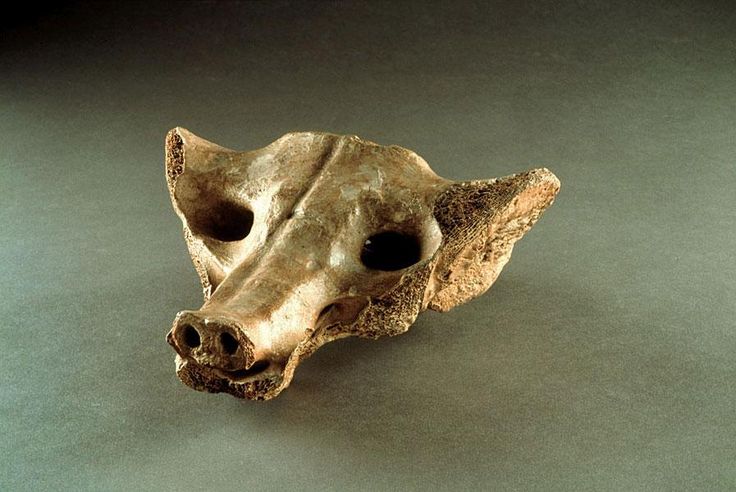AP Art History 1: Global Prehistory
1/10
There's no tags or description
Looks like no tags are added yet.
Name | Mastery | Learn | Test | Matching | Spaced |
|---|
No study sessions yet.
11 Terms
Title – 1. Apollo 11 Stones
Artist – Unknown
Date – 25,000-25,000 B.C.E
Medium – Charcoal on Stone
Location – Namibia
Size - 4 ¼” X 5”
Form: Brought from another place (mobile rock art); zoological representations (kinda therianthrope)
Function: “Hunting Magic” perhaps part of shamanistic hunting rituals
Content: Therianthropic representations, maybe shamanistic, surprisingly precise, possible ritual significance
Context: One of the oldest figurative art, buried in a cave with other artwork in stone age Africa. Cave was found during the time of the Apollo 11 launch.
Title – 2. Great Hall of the Bulls
Artist – Unknown
Date – 16000-14000 B.C.E.
Medium – Charcoal and ocher on stone
Location – Lascaux Cave, France
Size - 62’ X 18-25’
Form: Series of cave paintings in France, depictions of various animals, perhaps migration, usage of twisted perspective, lots of movement, early spray paint (spat pigment)
Function: Possible ritual significance, more “hunting magic” and shamanistic practices, relevant b/c hunting and foraging super important for the prehistoric people
Content: Massive depictions of bulls, stags, horses, and cattle perhaps migrating in the same direction, maybe shamanistic. Prehistoric people utilized scaffolding for this
Context: Thousands of years old cave housing people who witnessed the migration of diverse wildlife. Discovered in the 40s after someone lost their dog or something.

Title – 3. Camelid Sacrum in the Shape of a Canine
Artist – Unknown
Date – 14000-7000 B.C.E.
Medium – Bone
Location – Tequixquiac, Mexico
Size - 7.4”
Form: Camelid sacred that is carved in the shape of a canine. Carved after sacrum was fossilized. Symmetry achieved through usage of sharp tool
Function: IDK, maybe ritual, maybe someone wanted to honor their dog (my guess)
Content: Possibly made b/c the sacrum bone is considered sacred b/c of proximity to reproductive organs in some ancient meso-American culture.
Context: Accidentally discovered in the valley of Mexico by an engineer, at the site of an ancient lake. Fossilized state and lack of info led to debates about when it was modified.
Title – 4. Running Horned Woman
Artist – Unknown
Date – 6000-4000 B.C.E.
Medium – Pigment on rock
Location – Tassili n’Ajjer, Algeria
Size - n/a
Form: Painted onto a rock shelter high up on a massif. Faceless horned woman, various garments denoted by a lighter pigment, patterns on body maybe scarification, smaller humans below. Above her dots of maybe grain .
Function: Maybe spiritual/ritual purposes, maybe rock shelter was a sanctuary for a female deity
Content: Horned woman maybe a goddess, lots of body decoration, hierarchical scale as the largest figure. Found at an elevated height, maybe spiritual significance.
Context: 1930s, French were observing the art of the area in Algeria, eventually properly attributed to ancient Africans, with the local population aware of the art for years
Title – 5. Bushel with Ibex Motifs
Artist – Unknown
Date – 4200-3500 B.C.E.
Medium – Painted terra cotta
Location – Susa, Iran
Size - 28.90 cm X 16.40 cm
Title – 6. Anthropomorphic Stele
Artist – Unknown
Date – Fourth millennium B.C.E.
Medium – Sandstone
Location – Arabian Peninsula
Size - 3’
Title – 7. Jade Cong
Artist – Unknown
Date – 3300-2200 B.C.E.
Medium – Carved Jade
Location – Liangzhu, China
Size -
Title – 8. Stonehenge
Artist – Unknown
Date – 2500 B.C.E.
Medium – Sarsen Stone
Location – Salisbury Plain, Wiltshire, England
Size - 13’ X 7’
Title –9. The Ambum Stone
Artist – Unknown
Date – 1500 B.C.E.
Medium – Greywacke
Location – Ambum Valley, Enga Province, Papua New Guinea
Size - 20 X 7.5 X 14 cm
Title – 10. Tlatilco Female Figurine
Artist – Unknown
Date – 1200-900 B.C.E.
Medium – Ceramic with pigment
Location – Central Mexico, North America
Size - 9.5 X 4.8 X 2.1 cm
Title – 11. Terracotta Fragment
Artist – Unknown
Date – 1000 B.C.E.
Medium – Red-slip Earthenware
Location – Santa Cruz Islands
Size